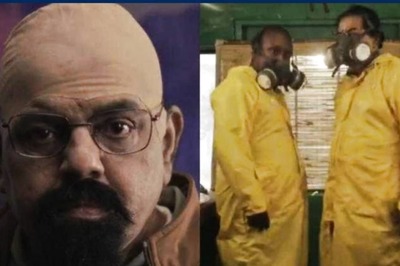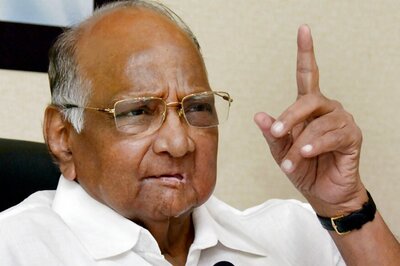
views
The clash on the night of June 15 is instructive in many ways. But mostly, it is likely to become a case study in China. The PLA and their masters have largely had a free run over the decades. They have successfully employed psychological warfare with its supporting attributes like media campaigns and selective legal interpretations to inch beyond their periphery.
Most countries have avoided standing up to the Chinese and have given in to their territorial aggression and diplomatic double speak. The strategy worked like a charm, duly aided and supported by an enviable war chest created by the fastest growing economy in the world.
Over the years, the success of a proven formula should have led to the creation of a satisfied power. This has been evident in Hong Kong, Taiwan, South China Sea, Tibet, South Mongolia and the list just goes on. Instead, it has given rise to arrogance and over confidence.
This has undoubtedly permeated down the rank and file of the People’s Liberation Army (PLA). However, even as the PLA basked in the sparkle of their military toys, they perhaps forgot the lessons that emerge from the conflictual experiences of the Indian Army. It will be relevant to relate two such case studies, the first against their friends across the Line of Control (LoC).
This action was a part of Operation Faulad in 1965 in the Poonch Sector. Termed as the Battle of Raja Rani, it is an account of 2 SIKH, its gallant soldiers and foremost their Commanding Officer, Lt Col NN Khanna.
Tasked at short notice to capture the Raja post, the battalion undertook a long and arduous approach march in the mountains and launched a multidirectional attack against the Pakistanis. A simultaneous assault was being undertaken by 3 DOGRA against its adjacent post called Rani.
A fierce battle ensued despite the day-lighted troops of 2 SIKH fighting against all odds. With the attack having been stalled, the CO Col Khanna rallied his men and personally led a second assault. Having captured the first few bunkers, he fell to enemy machine gun fire. This did not break the resolve of the troops. Instead, it fired them to charge on relentlessly.
The Raja post was captured with heavy casualties on both sides. What seemed to be impossible had been achieved. With victory at their feet, a soldier rightly summed up the battle when he said, “Raja litta, Raja ditta” (We won Raja, we sacrificed a Raja).
In yet another incident, though this time from the 17th century, Chhatrapati Shivaji’s army achieved a stupendous feat. Shivaji had planned to recapture a number of forts held by the Mughals. Among these, one of the most outstanding and difficult to attack was Sinhagarh, near Pune, not very far from the National Defence Academy.
The Maratha Army came up with an ingenious plan to climb the fort walls, which were a major impediment in capturing it. Tanaji Malusare, the general leading the army, planned to scale the walls with the help of tamed monitor lizards called Ghorpads.
In the ensuing battle, Tanaji was killed in action. However, the passing away of the general did not deter the troops, who fought on relentlessly to defeat the Mughal forces. After the victory Chhatrapati Shivaji is said to have remarked, “Gad aala, pan Sinha gela” (the fort has been won but we lost the lion). The fort is suitably named Sinhagarh.
In many ways, the incident of June 15 and the actions of 16 BIHAR follow in the illustrious footsteps of their predecessors. It is heartening to find that the death of a leader did not dampen the morale of soldiers and the actions of the battalion were resolute despite the constraints imposed.
Quite to the contrary, death galvanised them to fight a numerically superior force with equipment better suited for the nature of clash that took place. The limited inputs from the scene of action suggests that the Biharis have done themselves, their Paltan, the Indian Army, and the country proud.
The incident on June 15 has yet again proved that the morale and ability to deliver against all odds at the level of an Infantry Battalion, remains as effective as ever. The fact that the CO, Col Santosh Babu, and his small confirmatory party were out-numbered is undoubted. It is also clear that they were physically assaulted in the most despicable way. However, this did not deter the soldiers to fight for the honour of their CO and the Paltan. Neither did it dissuade their brothers in arms from the battalion to fight despite all odds of terrain and evidently a disadvantageous position.
There are some incidents that tend to create an impact well beyond the narrow geographical confines of the hills and valleys that they take place in. At times, tactical actions can have a strategic impact and a strategic import. What defines such incidents is its context and imagery.
In the past, it seemed that the Chinese had mastered the art of a fine balancing act. They did just enough to push their strategic objectives, but never as much to trigger a response. However, the series of events that led to this standoff and the blatant display of barbaric behaviour suggests that PLA’s arrogance got the better of its judgement.
The incidents at Galwan will become a watershed in India’s relations with China in the foreseeable future. The caution, care and sensitivity that governed India’s actions will and should get diluted. Decisions, both bilateral and multilateral that were set aside should be back on the table. China has proved beyond doubt that strength begets strength. And one-sided respect and caution is unlikely to be reciprocated by Beijing.
The achievements at Nathu La in 1967 are often lost sight of in the shadow of the 1962 Indo-China war. Before events and the fast turning pages of history make this incident a small speck on our timeline, let us name the ridge overlooking Galwan Valley the Santosh Ridge. It is only appropriate to immortalise the sacrifice of Col Babu and his men, who will continue to inspire not only the men of 16 BIHAR but also the entire Nation, in the collective effort to guard the sovereignty and territorial integrity of the country.



















Comments
0 comment